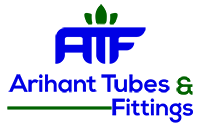When you trade with us, you’ll be predicting on the price of spot forex, futures and options either rising or falling with a CFD account. It’s achieved by opening positions that will stand to profit if some of your other positions decline in value – with the gains hopefully offsetting at least a portion of the losses. An example would be EUR/USD and GBP/USD, which are positively correlated because they tend to move in the same direction.
Forex trading is far more common due to the market’s high degree of leverage, liquidity, and 24-hour accessibility. Forex traders typically use shorter-term strategies to capitalize on frequent price fluctuations in currency pairs. Meanwhile, trading involves a shorter-term approach, seeking to profit from the frequent buying and selling of assets. Traders seek to capitalize on short-term price trends and may hold positions for a few seconds (scalping), minutes, hours (day trading), or days to weeks (swing trading). They often rely on technical analysis, studying charts and patterns to identify trading prospects.
Forwards and Futures Markets
During a downtrend, when prices are falling, it’s more possible to profit by trading with that downtrend. However, most stock exchanges are controlled and regulated by those who have an interest in keeping stock prices high with short-selling restrictions and huge costs. Last, the forex market allows for easy access to a wide range of currencies, giving traders the ability to diversify their portfolios. With so many currency pairs available, traders can hedge against risk or take advantage of global economic events to make a profit. The market is also highly transparent, with news and information about economies readily available, helping traders make informed decisions. This accessibility and range of choices make the forex market appealing to both new and experienced traders.
Day trading
- First of all, there are fewer rules, which means investors aren’t held to strict standards or regulations like those in the stock, futures, and options markets.
- You can place different types of orders and use algorithmic trading.
- Approximately $6.6 trillion worth of forex transactions take place daily, which is an average of $250 billion per hour.
- Futures contracts have specific details, including the number of units being traded, delivery and settlement dates, and minimum price increments that can’t be customized.
- By 1973, the world’s major currencies began to float freely against each other.
- This means that with relatively small capital, starting from as little as $100, you can enter the global forex market and trade sums starting at $10 000.
Rollover refers to the interest either charged or applied to a trader’s account for positions held “overnight”, meaning after 5 pm ET. Unlike non-leveraged products, you don’t take ownership of the asset, but take a position on whether you think the market will rise or fall in value. A forward trade is any trade that settles further in the future than a spot transaction.
What are the risks in FX trading?
The most common pairs are the USD versus the euro, Japanese yen, British pound, and Australian dollar. Trading pairs that do not include the dollar are referred to as crosses. The most common crosses are the euro versus the pound and the euro versus the yen. In the forex market, currencies trade in lots, called micro, mini, and standard lots. A micro lot is 1,000 worth of a given currency, a mini lot is 10,000, and a standard lot is 100,000. For example, a trader can exchange seven micro lots (7,000), three mini lots (30,000), or 75 standard lots (7,500,000).
Understanding Bid, Ask, and Spread in Forex Trading
Each currency pair is quoted in terms of one currency versus another. For example, in the EUR/USD currency pair, EUR (the euro) is the base currency and USD (the U.S. dollar) is the quote currency. Conversely, if you sell this pair, you are selling euros and buying dollars. Forex trading involves a significant amount of risk, as currency prices can be highly volatile.
To execute trades, forex traders use trading platforms provided by brokers. These platforms allow traders to access real-time market prices, place orders, and monitor their positions. Traders can choose from different types of orders, including market orders, limit forex broker rating orders, and stop orders, to enter and exit trades at desired price levels. Now, let’s take a closer look at how currency pairs are quoted in forex trading.
Another way to generate returns is through “carry trading,” where you profit from interest rate differences between two currencies. By buying a currency with a higher interest rate while selling one with a lower rate, you can earn the difference in rates. For instance, if you buy Australian dollars (with a 4% interest rate) using Japanese yen (with a 0.1% rate), you could earn almost 4% annually, plus any favorable exchange rate movements. Making money in forex trading requires more than just buying and selling currencies—it demands a well-thought-out approach combining strategy, discipline, and risk management.
The most successful traders often blend multiple strategies or switch based on market conditions. The carry strategy in forex trading exploits interest rate differentials between currency pairs. By using this particular strategy, traders aim to capitalize on those sharp movements that signal a potential shift in market sentiment, leading to increased volatility and new trends. Retail or beginning traders often trade currency in micro lots, because one pip in a micro lot represents only a 10-cent move in the price.
- Market participants are institutions, financial product banks, commercial banks, and retail investors worldwide.
- A trader thinks that the European Central Bank (ECB) will be easing its monetary policy in the coming months as the Eurozone’s economy slows.
- Forex trading is far more common due to the market’s high degree of leverage, liquidity, and 24-hour accessibility.
- This is because these countries’ economies can be more susceptible to intervention and sudden shifts in political and financial developments.
- The forex market determines the day-to-day value, or the exchange rate, of most of the world’s currencies.
The bigger the lot size, the higher the profits (or losses), and vice versa. Although leveraged products can magnify your profits, they can also magnify losses if the market moves against you. Foreign exchange (forex) prices are the product of the movement of one currency relative to another. fxpro broker review For example, when people talk about the price of the Euro (EUR), they are referring to the EUR value relative to another currency, depending on which pair they are considering (e.g., EUR/USD). The forex, or FX, is the global marketplace for the exchange of currencies.
In sum, a general rule of thumb in all kinds of financial markets including FX is that politics usually trumps economics. In other words, very good or bad geopolitical data tend to outweigh economic data. They lower them to stimulate growth, and they raise them to keep inflation low.
Forex analysis explained
In the EU, many countries comply with the common standards set by the European Securities and Markets Authority, but each country has its own regulatory body. Forex is an online market where traders exchange one currency for another based on the rates set by the largest global over-the-counter participants. The market is so liquid and global that it doesn’t rely on specific stock exchanges. Even though traders using leverage do not need to post the full amount in margin, it is important to remember that profits and losses are based on the full trade size.
Export-oriented economies depend more on trade flows, and countries more focused on financial industries are more dependent on capital flows. Trading currencies productively requires an understanding of economic fundamentals and indicators. A currency trader needs to have a big-picture understanding of the economies of the various countries and their interconnectedness to grasp the fundamentals that drive currency values.
Forex trading example 1: buying EUR/USD
You should always choose a licensed, regulated broker that has at least five years of proven experience. These brokers will offer you peace of mind as they will always prioritise the protection of your funds. Once you open an active account, you can start trading forex — and you will be required to make a deposit to opencv introduction cover the costs of your trades. This is called a margin account which uses financial derivatives like CFDs to buy and sell currencies.
We will teach a variety of ways to harness the power of forex markets. Regardless of your skill level or risk tolerance, there are solutions here to suit you. You have no better chance of beating someone like David Woo or Stephen Jen at short-term forex trading than you do at beating Michael Jordan or Lebron James at basketball. A trader must understand the use of leverage and the risks that over-exposure introduces to an account.
These include the high available leverage, volatility, and liquidity of the forex market. Trading based on economic news is an example of a fundamental strategy. A trader may be watching the US employment report and see it come in worse than the consensus expected by analysts.


Recent Comments